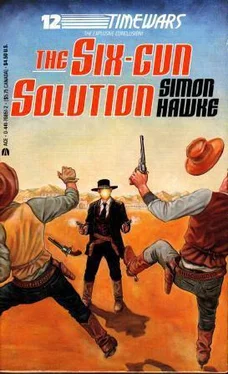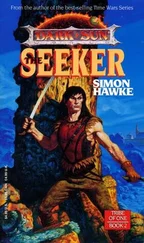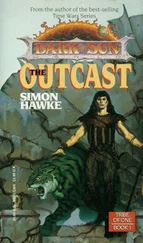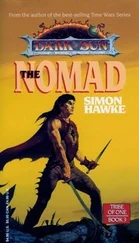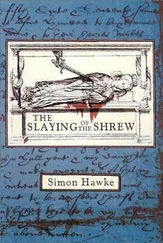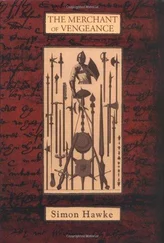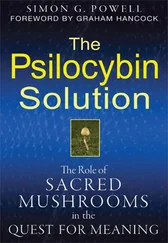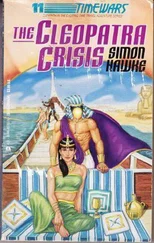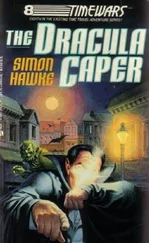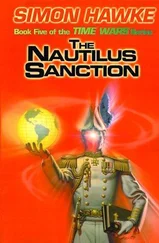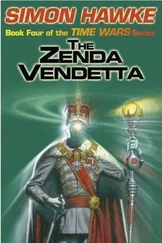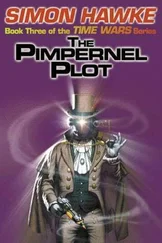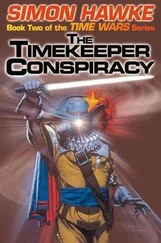Simon Hawke - The Six Gun Solution
Здесь есть возможность читать онлайн «Simon Hawke - The Six Gun Solution» весь текст электронной книги совершенно бесплатно (целиком полную версию без сокращений). В некоторых случаях можно слушать аудио, скачать через торрент в формате fb2 и присутствует краткое содержание. Жанр: Фантастика и фэнтези, на английском языке. Описание произведения, (предисловие) а так же отзывы посетителей доступны на портале библиотеки ЛибКат.
- Название:The Six Gun Solution
- Автор:
- Жанр:
- Год:неизвестен
- ISBN:нет данных
- Рейтинг книги:4 / 5. Голосов: 1
-
Избранное:Добавить в избранное
- Отзывы:
-
Ваша оценка:
- 80
- 1
- 2
- 3
- 4
- 5
The Six Gun Solution: краткое содержание, описание и аннотация
Предлагаем к чтению аннотацию, описание, краткое содержание или предисловие (зависит от того, что написал сам автор книги «The Six Gun Solution»). Если вы не нашли необходимую информацию о книге — напишите в комментариях, мы постараемся отыскать её.
The Six Gun Solution — читать онлайн бесплатно полную книгу (весь текст) целиком
Ниже представлен текст книги, разбитый по страницам. Система сохранения места последней прочитанной страницы, позволяет с удобством читать онлайн бесплатно книгу «The Six Gun Solution», без необходимости каждый раз заново искать на чём Вы остановились. Поставьте закладку, и сможете в любой момент перейти на страницу, на которой закончили чтение.
Интервал:
Закладка:
Simon Hawke
The Six Gun Solution
Prologue
It was said that the town of Tombstone in the Arizona Territory was hell on Earth and Scott Neilson believed it. It was certainly hot enough. He would have welcomed air conditioning, but such conveniences did not exist in 1881. He would have felt more comfortable in a pair of khaki slacks, boat shoes and a polo shirt. but such attire would have made him a decided oddity in the Oriental Saloon.
All around him. men were dressed in high-heeled boots and jeans and long-sleeved, loose cotton shirts in solid colors and prints. Some wore leather or cloth vests. Some even wore overcoats or trail dusters. Most wore kerchiefs and high crowned Stetsons, while others wore black bowlers. The men in bowlers were more elegantly dressed. in long, black frock coats and pinstripe, stovepipe trousers, white shirts and silk cravats with stickpins, silk vests with gold watch chains dangling from them. Many of them also carried walking sticks. And beneath that, they wore union suits. They had to be sweating like pigs, thought Neilson. He knew he was. None of them openly wore guns.. though Neilson knew there were bound to be some Remington derringers and the occasional six-gun concealed here and there
The law in Tombstone was clear on the subject of firearms. Only officers of the law or men with special permits issued by those officers were allowed to carry guns. On entering Tombstone, one was supposed to check his guns at one of the corrals or leave them in a hotel. The practice of going armed on the streets of Tombstone was definitely frowned on and could result in arrest and a fine of twenty-five dollars. Nevertheless, many people disregarded the law and wore concealed weapons beneath their coats, often tucked into their belts or waistbands. Tombstone, it was said, had a man for breakfast every morning, which was a wry way of saying that there was at least one killing every night.
The town did not exist when prospector Ed Schieffelin arrived in 1877, looking to make a strike. Thirty years old and a seasoned miner, Schieffelin was a wild-looking character with long, dark red hair and a matted beard, his clothing patched with animal skin. The country he had come to prospect was desolate and ruled by the Apaches. After he arrived at the Army post at Camp Huachuca, he did some prospecting in the area and then accompanied an Army detachment as a scout through the Sonoita Valley and the Patagonia Mountains, near the Mexican border, then back along the San Pedro River. Upon returning, he announced his intention to go back and do some prospecting in the area. He had taken a fancy to the hills he saw along the San Pedro.
— All you’ll find out there is your tombstone,” he was told. “The Apaches will see to that.”
Nevertheless, Schieffelin went and made a silver strike that was the richest in the territory. Remembering the warning he’d been given, he showed his sense of humor by naming his claims Tombstone and Graveyard. News of the strike soon had settlers flocking to the area and the town that grew up on Goose Hats also came to bear the name of Tombstone, as did the hills around it. It soon became the largest mining boomtown in the country, rivaled only by Colorado’s Leadville, nestled in a Rocky Mountain valley at an elevation of ten thousand feet. At least it was cool up there, Neilson thought, wistfully.
He had arrived in Tombstone early that afternoon and checked into the Grand Hotel. He had come in by stage from Benson, which was as far as the Southern Pacific railroad went. However, he had not arrived in Benson on the train. He had used a considerably more advanced form of transportation and he had come a long, long way. Over eight hundred years, in fact. He had made the trip in the blink of an eye, using his warp disc, which he wore camouflaged as a heavy silver Indian bracelet on his left wrist. The large, blue-green turquoise stone was actually a cleverly hinged cover, hiding the chronocircuitry controls.
Sergeant Scott Neilson was a temporal agent, a soldier in the First Division of the United States Army Temporal Corps, an elite commando unit tasked to adjust temporal disruptions. With the advent of the Temporal Crisis, the First Division had been merged with the Temporal Intelligence Agency under the directorship of Brigadier General Moses Forrester, commander of the First Division. Neilson had come to Tombstone to investigate a situation involving Observer Outpost G-6898. The three Temporal Observers assigned to this sector had failed to make their last two scheduled reports.
Given the hazardous nature of their duty, any of a number of things could have happened to them. The Arizona Territory could be highly dangerous. If something had happened to them as a result of the normal dangers of this time sector, Neilson’s job was to ascertain precisely what it was and arrange for their replacement. But if something had happened to them that was not a result of the normal hazards of this period, it could mean serious trouble. It could mean an infiltration by soldiers of the Special Operations Group, the undercover commando strike force from the parallel universe. And Tombstone could become another battlefield in the Time Wars.
Neilson had been selected for this assignment for a number of reasons. One was that he had already proven himself on a significant temporal adjustment mission in 19th-century London, when the insane, crosstime terrorist named Nikolai Drakov had brought about a temporal disruption by using his genetic engineering skills to release a plague of vampires and werewolves upon the unsuspecting city. That mission had been one of the most complex and dangerous assignments the T.I.A. had ever faced and Drakov was their most dangerous antagonist. Half of the adjustment team in that assignment had been killed. Neilson had been one of the survivors, which had netted him both a promotion and a decoration. Another reason he was chosen was that his file showed him to be a student of the frontier era, as well as a collector of antique firearms and an expert in their use.
He had grown up in Tucson, Arizona, though the Tucson of the 27th century was a far cry from the town of Tombstone in the 1800. In his own time, Tucson was a sprawling, multi leveled metropolis with skyscrapers over a hundred stories tall. Yet even so, many of its residents still clung fondly to the tradition of its Wild West beginnings and even in the 27th century, some of them still wore western boots and Stetsons. Neilson’s father had been a university history professor whose hobby was studying the Old West. Over the years, at considerable expense and time involving extensive computer searches of collector lists and estate auctions, he had accumulated a collection of antique western firearms that was worth a fortune. It included old black powder pistols such as Patterson. Walker and Navy Colts, Remingtons and Colt Single Action Armys, Winchester carbines and shotguns and Sharps buffalo rifles. Most of these weapons were in poor condition and would have been dangerous to fire. Shooting them would also have diminished their collector value, However, Scott’s father had also obtained a number of late-20th-century reproductions and he had a number of them duplicated by skilled Japanese artisans so that they were identical to the authentic western guns down to the last detail. And those could be safely fired.
Ammunition for them was, of course, no longer available and had to be made from scratch. It had been necessary to make the brass cases and melt the lead to be poured into antique bullet molds. Lead projectile weapons had not been in general use for several hundred years and the smokeless powder for them that had been used in the 20th and 2Ist centuries was no longer commercially available. It had been necessary to duplicate the old black powder of the frontier era, but this was more easily accomplished and had appealed to Scott’s purist father. The most difficult thing about the process had been manufacturing the primers, but Scott’s father had been determined to pursue authenticity at all costs.
Читать дальшеИнтервал:
Закладка:
Похожие книги на «The Six Gun Solution»
Представляем Вашему вниманию похожие книги на «The Six Gun Solution» списком для выбора. Мы отобрали схожую по названию и смыслу литературу в надежде предоставить читателям больше вариантов отыскать новые, интересные, ещё непрочитанные произведения.
Обсуждение, отзывы о книге «The Six Gun Solution» и просто собственные мнения читателей. Оставьте ваши комментарии, напишите, что Вы думаете о произведении, его смысле или главных героях. Укажите что конкретно понравилось, а что нет, и почему Вы так считаете.
